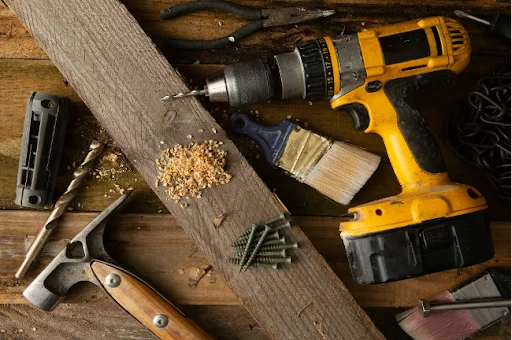Older homes carry a sense of history and craftsmanship that modern structures often lack. From intricate moldings and hardwood floors to vintage fixtures and unique architectural details, they possess a warmth that’s hard to replicate.
Yet, as time passes, these homes require updates to meet modern needs, improve energy efficiency, and ensure comfort. The challenge lies in enhancing functionality and aesthetics while preserving the original charm that makes the home special.
Upgrading an older home without compromising its character requires thoughtful planning, respect for its heritage, and the right mix of modern techniques and traditional sensibility. When handled carefully, a renovation can breathe new life into an aging structure while maintaining the soul that defines it.
Discover insights our readers love—dive into related posts that spark ideas!
Updating Your Home with Skilled Craftsmanship
One of the first steps in upgrading an older home is understanding what makes it unique. Before making any changes, take time to identify defining features such as crown molding, stained glass, wooden beams, or brick fireplaces. These details form the character of the home and should be preserved or restored wherever possible.
When planning updates, consider which aspects truly need modernization. Kitchens and bathrooms often require more extensive upgrades to improve functionality, while living spaces may benefit from subtle adjustments like refinishing floors or updating lighting.
Reliable handyman services can handle essential tasks, including installing plumbing and electrical fixtures, mounting ceiling fans, performing general repairs, patching and painting, completing finish work, assembling furniture, and mounting televisions or curtains.
These services make it easier to refresh and modernize an older home while maintaining the timeless charm that defines it.
Restoring Original Features for Authentic Appeal
Restoration is often more rewarding than replacement. Many older homes were built with high-quality materials that, when cared for, can last for generations. Hardwood floors can be sanded and refinished rather than replaced.
Original doors and moldings can be repaired and repainted to maintain their distinctive look. Even elements like fireplaces or built-in shelving can often be restored to their former beauty with a bit of craftsmanship.
When refinishing or repainting, choose colors and finishes that complement the home’s period style. Subtle, historically inspired shades help maintain authenticity while giving spaces a refreshed feel. Restoration not only preserves the integrity of your home but also often costs less than installing entirely new materials, all while keeping the timeless essence intact.
Enhancing Energy Efficiency Without Altering Character
Older homes are often known for drafts, outdated insulation, and inefficient systems. Improving energy efficiency is one of the most effective ways to enhance comfort while maintaining traditional charm. Start by adding insulation in attics, basements, and walls to improve temperature control without changing the home’s appearance.
Windows can present a unique challenge. Instead of replacing them, consider repairing existing frames and adding storm windows to increase insulation. This keeps the original look while improving performance.
Similarly, updating heating, cooling, and electrical systems can bring the home up to modern standards without affecting its historic appeal. The goal is to focus on internal improvements that maintain the home’s character while increasing comfort and efficiency.
Updating the Kitchen and Bathroom Thoughtfully
Kitchens and bathrooms are among the most used spaces in any home and often need the most attention. In an older property, updating these rooms requires care to ensure they blend seamlessly with the rest of the home’s design. Choose cabinetry, fixtures, and finishes that echo the home’s original aesthetic while providing the benefits of modern convenience.
Simple design elements like shaker-style cabinets, classic tiles, and traditional hardware can create continuity between old and new. Introducing contemporary upgrades such as energy-efficient appliances or water-saving fixtures enhances functionality while maintaining visual harmony. Avoid over-modernizing; instead, create spaces that feel timeless, comfortable, and cohesive.
Incorporating Modern Lighting with Sensitivity
Lighting has a profound effect on how a home feels. Many older homes were built with limited lighting options, leading to darker interiors. Modernizing lighting should be done thoughtfully to preserve the atmosphere of the original design.
Select fixtures that complement the era of your home. Vintage-inspired sconces, pendant lights, or chandeliers can add both warmth and character. Where extra brightness is needed, such as in kitchens or hallways, consider using recessed lighting carefully and sparingly. Adding dimmer switches allows flexibility in setting the mood, ensuring your lighting upgrades feel elegant rather than intrusive.
Preserving the Exterior’s Historic Integrity
The exterior of an older home is often its most defining feature. From the roofline to the porch columns, each detail contributes to its unique character. When upgrading, prioritize materials that mirror the original construction as closely as possible. Wooden siding, stonework, and classic trim details should be repaired or replaced using traditional craftsmanship.
When repainting, choose colors that reflect the home’s architectural style. Researching historically accurate palettes or working with design references from the period can help guide your decision.
Blending Old and New in Interior Design
Balancing modern comfort with traditional charm often comes down to interior design. Mixing contemporary furnishings with antique or vintage pieces creates a layered look that feels inviting and timeless. For example, a restored dining table paired with modern chairs or a vintage mirror above a sleek vanity can bridge the past and present effortlessly.
Preserve architectural details such as built-in shelving, woodwork, or decorative ceilings whenever possible. These original elements tell the story of your home and serve as visual anchors. Complement them with neutral tones and textures that enhance rather than compete with their beauty.
Modern Comfort Meets Historical Soul
Every home tells a story, and upgrading an older one should be about continuing that story rather than rewriting it. By combining careful restoration with mindful modernization, it’s possible to create a living space that offers both beauty and comfort. Thoughtful upgrades that respect craftsmanship and tradition allow the home to evolve without losing its essence.
With patience, planning, and attention to detail, you can enjoy the best of both worlds—a home that feels fresh and functional while preserving the grace, charm, and character that made you fall in love with it in the first place.
Check out our featured post—expert insights and top trends waiting for you!






